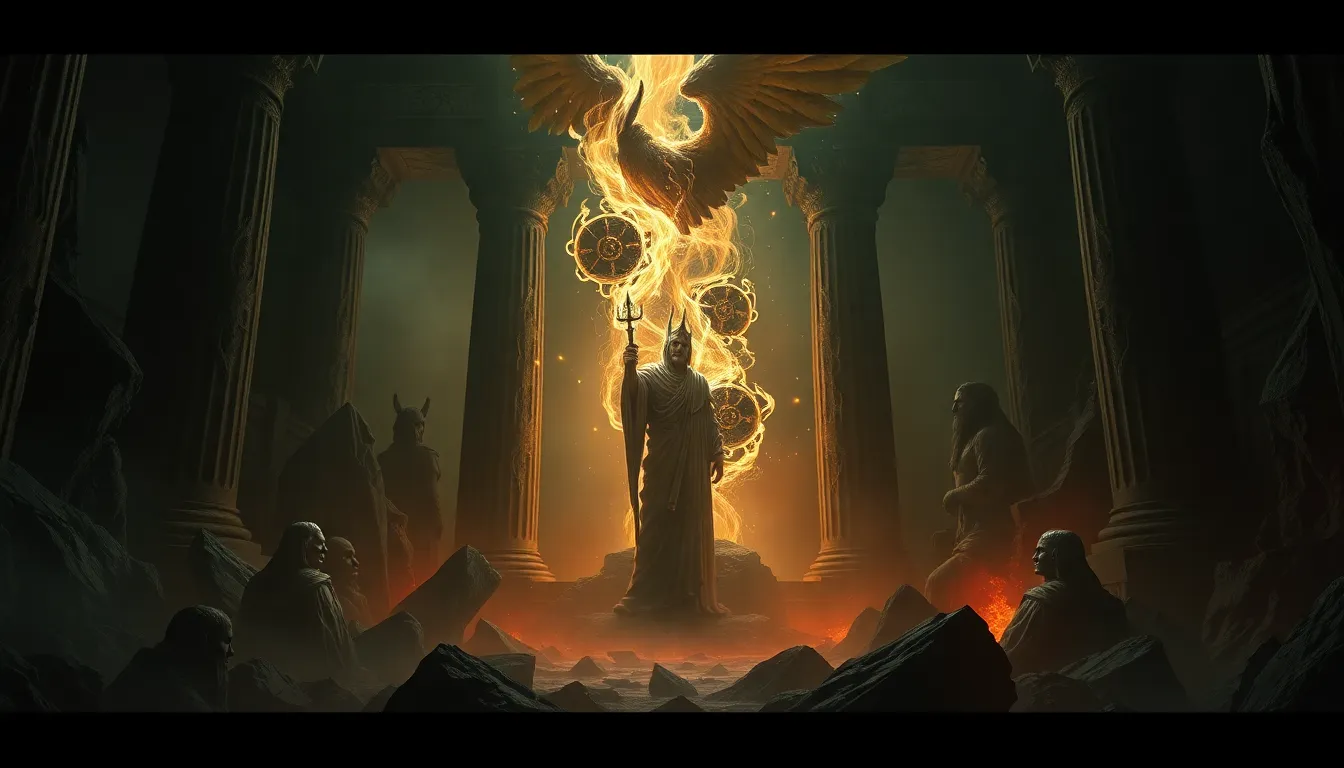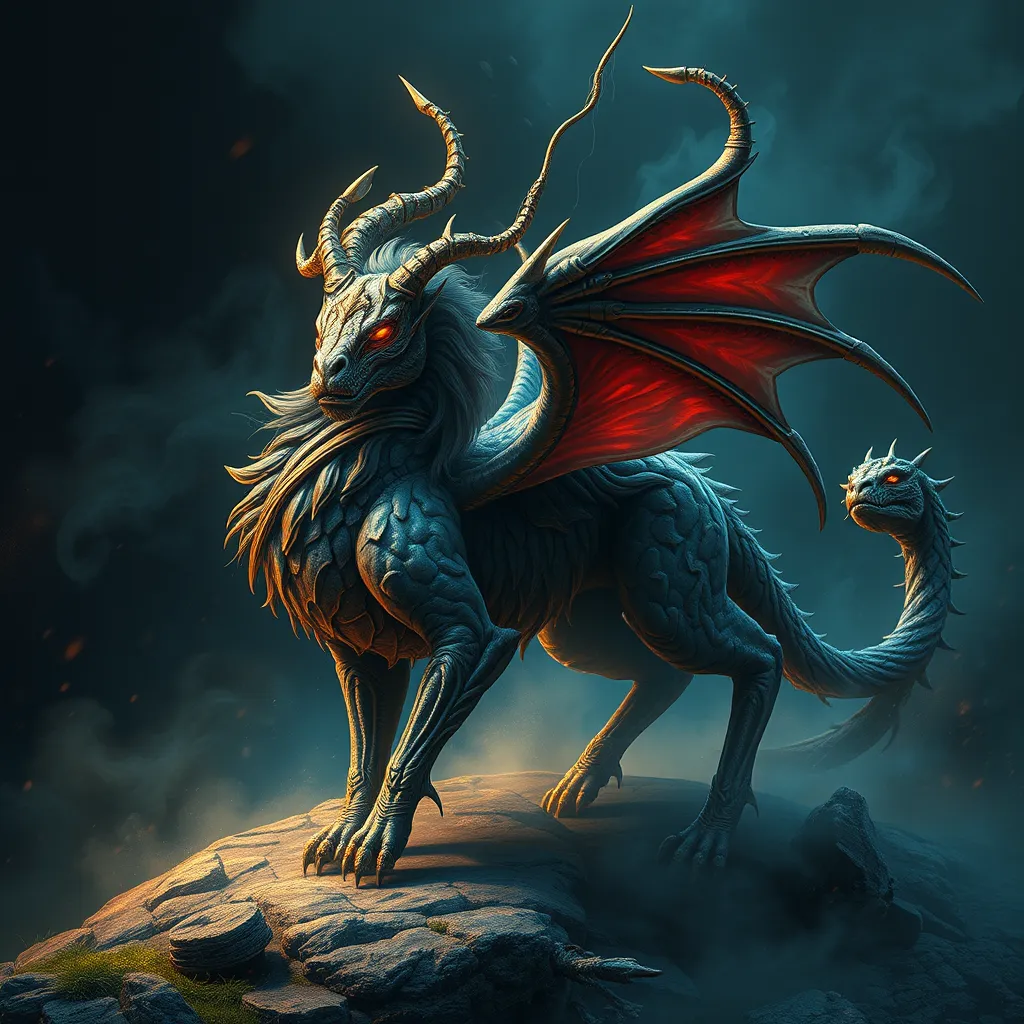Hades: The King of the Underworld – A Study of the Greek God of the Dead
I. Introduction
Hades, the enigmatic god of the Underworld, is a pivotal figure in Greek mythology. Often misunderstood, Hades represents not only death but also the complex nature of the afterlife. His realm, the Underworld, is a place of both fear and reverence, playing a crucial role in the ancient Greek understanding of life, death, and what lies beyond. This article aims to explore the multifaceted character of Hades, shedding light on his origins, responsibilities, and lasting impact on culture and mythology.
II. Origins and Family Background
A. Birth and lineage of Hades
Hades was born to the Titans Cronus and Rhea, making him one of the original Olympian gods. He is often overshadowed by his more prominent brothers, Zeus and Poseidon, yet his role is equally significant in the pantheon of Greek deities.
B. Relationship with siblings: Zeus and Poseidon
Following the defeat of their father Cronus during the Titanomachy, the three brothers divided the cosmos among themselves. Zeus claimed the sky, Poseidon took the seas, and Hades was assigned the Underworld. This division established the hierarchy and realms of power among the gods.
C. Role in the Titanomachy and the division of realms
In the Titanomachy, Hades played a crucial role, fighting alongside his brothers against the Titans. Once victorious, the brothers drew lots to determine their domains, which solidified Hades’ position as the ruler of the Underworld, a realm often viewed with trepidation.
III. Hades as the Ruler of the Underworld
A. Description of the Underworld: geography and structure
The Underworld, often depicted as a dark and shadowy realm, consists of various regions including the Fields of Asphodel, the Elysian Fields, and Tartarus. Each area serves different purposes, reflecting the souls’ deeds during their mortal lives.
B. Responsibilities and functions of Hades as ruler
As the ruler of the Underworld, Hades oversees the souls of the deceased, ensuring they are properly guided and judged. His responsibilities include maintaining order within his realm and providing a safe passage for souls arriving from the living world.
C. The significance of the River Styx and Charon
The River Styx serves as a boundary between the world of the living and the dead. Souls are ferried across the river by Charon, the boatman, who demands payment in the form of an obol, a small coin placed in the mouth of the deceased. This ritual underscores the importance of burial practices in ancient Greek culture.
IV. Hades’ Symbols and Attributes
A. Iconography associated with Hades
Hades is often depicted with distinct symbols that convey his authority and domain. His imagery includes:
- The Helm of Darkness, which grants the wearer invisibility.
- The bident, a two-pronged staff symbolizing his power over the Underworld.
- Three-headed dog Cerberus, who guards the entrance to the Underworld.
B. Key symbols: the Helm of Darkness and the bident
The Helm of Darkness allows Hades to move unseen among gods and mortals, while the bident represents his dominion over the dead. These symbols are commonly found in ancient art, emphasizing his role as a powerful and feared deity.
C. The representation of Hades in art and literature
Throughout history, Hades has been portrayed in various forms of art and literature, often depicted as a stern, bearded figure. His character varies from a passive overseer of the dead to a more active participant in myths, reflecting the ancient Greeks’ ambivalence towards death.
V. Hades and the Dead: The Concept of the Afterlife
A. Hades’ role in guiding souls to the afterlife
Hades is not merely a god of death but also a guide for souls transitioning from the mortal realm to the afterlife. He plays a pivotal role in determining the fate of souls, which is a significant aspect of his character.
B. The concept of judgment and the different realms within the Underworld
Upon arrival in the Underworld, souls undergo a judgment process. Depending on their actions in life, they are sent to one of three realms:
- Elysian Fields: A paradise for the virtuous.
- Fields of Asphodel: A neutral zone for ordinary souls.
- Tartarus: A place of punishment for the wicked.
C. Comparison of Hades’ domain with other cultures’ views on the afterlife
Comparatively, Hades’ Underworld shares similarities with other cultures’ afterlife concepts, such as the Egyptian Duat and the Norse Hel. Each culture’s afterlife reflects its values and beliefs about morality and justice.
VI. Hades in Mythology
A. Key myths involving Hades: Persephone and the abduction myth
One of the most famous myths involving Hades is the abduction of Persephone, the daughter of Demeter. Hades fell in love with her and abducted her to the Underworld, leading to the change of seasons as Demeter mourned her absence.
B. Other notable stories featuring Hades and his interactions with gods and mortals
Hades also appears in various myths where he interacts with other gods and heroes, such as Heracles, who descended to the Underworld to retrieve Cerberus, and Orpheus, who attempted to bring back his wife Eurydice.
C. Analysis of Hades’ character: benevolent ruler or feared deity?
Hades embodies a complex character; while he is often feared, he also exhibits moments of compassion, particularly in his relationship with Persephone. This duality makes him a nuanced figure in Greek mythology.
VII. Hades’ Influence on Modern Culture
A. Hades in contemporary literature and film
In modern literature and film, Hades is frequently reimagined. He appears in works such as Rick Riordan’s “Percy Jackson” series, where he is portrayed with more depth and complexity.
B. The portrayal of Hades in video games and popular media
Hades has also found a place in video games, most notably in “Hades,” a roguelike game that presents him as a multifaceted character, combining elements of humor and depth.
C. The lasting legacy of Hades in modern interpretations of mythology
The portrayal of Hades continues to evolve, reflecting contemporary themes of death and the afterlife. His legacy persists in various forms, demonstrating the enduring fascination with this ancient deity.
VIII. Conclusion
Hades holds a significant position in Greek mythology as the god of the Underworld. His dual role as a ruler of death and a guide for souls reflects the complexity of the human experience with mortality. As cultures evolve, so does the interpretation of Hades, allowing his character to remain relevant in modern times. The enduring nature of Hades in popular culture serves as a testament to the rich tapestry of mythology that continues to captivate and inspire generations.



